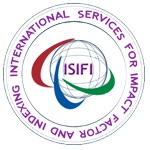Analysis of Determinants of Tourist Satisfaction and Trust and Its Impact on Revisit Intention in Recreational Parks in DKI Jakarta
Pdf : 215 Views 518 Download
Citation: Sofia Maulida, Farida Jasfar, M. Zilal Hamzah, â€Analysis of Determinants of Tourist Satisfaction and Trust and Its Impact on Revisit Intention in Recreational Parks in DKI Jakarta.â€. American Research Journal of Business and Management, vol 6, no. 1, 2020, pp. 1-6.
Copyright Sofia Maulida , et al. This is an open access article distributed under the Creative Commons Attribution License, which permits unrestricted use, distribution, and reproduction in any medium, provided the original work is properly cited.
Abstract:
Description:
The number of tourist arrivals from 2013-2017 increased by an average of 5.6%. This indicates that tourism in DKI Jakarta is developing along with better supporting infrastructure such as better mass transportation, including Transjakarta buses. In the research of Isnaini and Abdillah (2018) destination brand image has a significant influence on the variable satisfaction of millennial generation tourists with a positive image. Awaludin and Setiawan’s research (2012) states that trust has a significant and positive influence on customer loyalty. Previous studies have examined only two to three variables such as Bintarti and Kurniawan (2017) examining tourist satisfaction at Muara Bening and Allameh, et al (2015) with destination image, perceived quality, perceived value and satisfaction variables. Based on this, this study aims to determine the effect of recreational park imagery on tourist satisfaction of recreational parks in DKI Jakarta, the effect of recreational park imagery on tourist trust in recreational parks in DKI Jakarta, the effect of tourist p erceptions on tourist satisfaction of recreation parks in DKI Jakarta, influence of tourist perception on the trust of tourists to the Recreation Park in DKI Jakarta, the effect of service quality on the satisfaction of tourists to the Recreation Park in DKI Jakarta, the effect of service quality on the trust of tourists to the Recreation Park in DKI Jakarta, the effect of tourist satisfaction on the revisit intention of tourists of the Recreation Park in DKI Jakarta, and the influence of tourist trust towards the revisit intention of tourists of the Recreation Park in DKI Jakarta.
Literature References
Alma (2005) states that images are defined as impressions obtained in accordance with one’s knowledge and experience of something. According to Iman and Suwandi (2010) there are several important things related to the image, namely the impression of objects in the image, the image process is formed, and reliable sources. Objects are individuals and / or entities which consist of a group of people. The formation of images in the information process to enable the occurrence of images on objects due to the receipt of information every time. Millennial generation tourist satisfaction has a significant contribution in mediating the influence between destination brand image on revisiting interest (Isnaini and Abdillah, 2018). Cognitive imagery impacts tourist intentions to visit again, but affective imagery is ineffective in terms of intention to revisit (Artuger and Cetinsoz, 2017).Rangkuti (2014) states that perception is a meaningful stimulus received through its senses into a meaning through a process in which people choose, and organize it. But the meaning of the process of perception can be influenced by one’s past experience. The perception of tourists to tourist facilities is quite good (Wahyuningsih, 2018). Zeithaml, et al (1996) define service quality as a form of attitude, related but not the same as satisfaction, as a result of the comparison between expectations and performance. The main factors that affect service quality are expected services (expected service) and services received (perceived service). Service quality is considered good and satisfying if the service desired by consumers is in accordance with the services received, otherwise the service is of poor quality or cannot be said to be good if the desired service is not in accordance with the services received. The Service Quality Dimension is very important for increased customer satisfaction (Naik, et al., 2010). Service quality is a strong determinant of company image and customer loyalty (Hussein and Hapsari, 2015). Customer satisfaction plays the role of mediator in the effect of service quality on service loyalty (Mosahab, et al., 2010).Kotler (2016) mentions customer satisfaction is the result of a comparison between the assessment of the performance/end product in relation to customer expectations of the level of one’s feelings. Sharma (2017) satisfaction is a significant variable that mediates the relationship between service quality and customer loyalty. Irawan (2013) customer satisfaction is influenced by factors, namely: 1). Product quality, said to be satisfied if the product quality is good after the customer buys and uses the product. 2). Prices, low prices for sensitive customers, are a source of satisfaction because they will get a high value of money. 3). Service Quality, Service depends on three things, namely the system, technology, and people. Based on this concept, there are five dimensions of service quality, namely reliability, responsiveness, assurance, empathy, and tangibility. 4). Emotional Factor, a good image raises customer satisfaction. Emotional values can also arise from self-confidence, pride, self-confidence, symbols of success, which are the basis of satisfaction. 5). Ease, in getting products or customer service is relatively easy, convenient and efficient will be more satisfied.
Soegoto (2013) states that trust is related to emotional bonding, which is the ability possessed by someone to believe in a company or brand so that a function can work, so that repurchase interest and loyalty are positively related to trust. Trust (trust) is a feeling to be able to trust other parties for all the promises that have been given (Sam and Tahir, 2010). Customer experience and trust have positive and significant re-purchase intention. Customer satisfaction is able to mediate positively and significantly the effect of customer experience on repurchase intentions (Yolandari and Kusumadewi, 2018). Brand service quality has a significant influence on brand trust through brand satisfaction. In other words, this means that consumers will not trust the service quality of a brand unless they are first satisfied with the service quality of the brand (Chinomona, et al., 2013). Baker and Crompton (2013) behavioral intention to revisit is the intention of tourists to re-visit the place within a year and the intention to frequently come to that destination. Mat Som et al. (2012) destination image and recreational relaxation are the most important attributes of travel destinations and motives for revisiting Sabah and recommending Sabah as a tourist destination. External satisfaction is influenced by the quality of experience and image of tourism sites. The intention to re-visit is influenced by experience satisfaction (Bintarti and Kurniawan, 2017). Service quality, brand image, and trust are very strong and mediators of customer satisfaction in this relationship have an impact on customer loyalty (Ashraf, et al., 2018).
Methodology
This research is a survey research. The population of this research is all tourists to the leading tourism objects in DKI Jakarta, namely Taman Impian Jaya Ancol, Taman Mini Indonesia Indah and Ragunan Wildlife Park. The number of samples in this study amounted to 498 tourists from the four recreational park objects according to the maximum size of the sample size according to Roscoe. The Structural Equation Modeling (SEM) is used to analyze data with Warppls 5.0 statistical software in the model and hypothesis assessment.Result and DiscussionThe results of testing the validity of the question declared valid because the question item has a combined loading factor value above 0.5. Testing the value of composite reliability shows all variables have a value> 0.70 as well as the value of croanbach alpha for all variables showing a value of> 0.70. So it can be concluded that all variables are reliable. Based on the results of the general result output, it can be seen that the model has a good fit, where the P-value for Average Path Coefficient (APC) and Average R-squared (ARS) is p <0.01. Likewise with the resulting Average Variance Inflation Factor (AVIF) which is 1,611 which means <5. This shows that there is no multicollinearity problem between the independent (exogenous) variables. The number of iterations for this model is done 8 times. The following test results with WarpPLS 5.0:After the above test, the partial hypothesis test is continued as shown in the table below:The results showed the Brand Image, Perceived Service Quality Tourists, significant partial effect on Tourist Satisfaction. In addition, Brand Image, Tourist Perception, Service Quality, have a significant effect on Tourist Trust. Tourist Satisfaction and Trust have a significant effect on Revisit Intention. In table 3 above it can be seen that the magnitude of the contribution of the influence of brand image variables, tourist perceptions, service quality simultaneously to tourist satisfaction is 36.4%. The magnitude of the contribution of the influence of brand image variables, tourist perceptions, service quality together on tourist trust by 46%. The magnitude of the contribution of the influence of brand image variables, tourist perceptions, service quality and intervening variables (satisfaction and trust) simultaneously on revisit intention by 35.4%.
Conclusion
Based on the results of research and analysis conducted in the previous chapter, the following general conclusions are obtained, revisit intention is influenced positively and significantly by brand image, tourist perceptions, service quality through tourist satisfaction and trust in recreational parks in DKI Jakarta. The main finding of this study is directly that the revisit intention of tourists is most strongly influenced by the variable tourist confidence in recreational parks. Tourist trust is influenced by the quality of recreational park services. The theoretical implications of this study are revisit intention models that all exogenous variables affect the endogenous variables. Managerial implications of this study for managers of recreational parks to pay attention to variables of brand image, tourist perceptions, service quality, trust and tourist satisfaction so that tourists can revisit the recreation park repeatedly. Managerial implications can further integrate accessibility with accommodation and with admission to tourist attractions, for example with a bus pass ticket with tourist ticket admission and hotel vouchers. his research is only limited to recreational parks in DKI Jakarta which are carried out in 4 recreational parks that have the largest tourists, so suggestions for further research can examine accessibility, amenities, attractions and innovations in attractions and facilities / vehicles. The next suggestion respondents in the study could come from foreign tourists to provide more value.
RECOMMENDATION
1. Based on this research, here are some important things that can be put forward for implementation of business ethics, entrepreneurship motivation and business performance in perspective Islamic:
1. The need for socialization related to how to maintain business ethics that are not detrimental and take the property of others in private.
2. Conducting business transactions based on the rules taught by Islam, so that it can implement Maqasid Sharia.
3. The government, scholars, intellectuals and community leaders must play an active role in realizing the importance of religious observance in all matters, including business activities so that understanding of fair trade and moral trade can be applied, which aims to benefit the community.
4. Business practices must be guided properly by economic rules that are rational based on religious values. Islam strongly supports business and competition, but remains assertive in what is considered haram. Islam provides guidelines and limits on how an entrepreneur runs his business activities.
References
6. Baker, D., and Crompton, J. (2013). Quality, Satisfaction and Behavioral Intentions. Annals of Tourism Research, Vol. 27, 785-804.
15. Kotler, P. (2016). Marketing Management: Analysis, Planning, Implementation, and Control. Edisi ke-12, Printice Hall, Englewood Cliffs.
16. Mat Som, A. P., Marzuki, A., Yousefi, M. dan Abu-Khalifeh, A. N. (2012).Factors Influencing Tourists’ Revisit Behavioral Intentions: A Case Study
17. Mosahab, R., Mahamad, O., Ramayah, T. (2010). Service Quality, Customer Satisfaction and Loyalty: A Test of Mediation. International



















